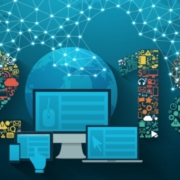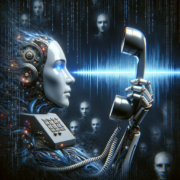Top 4 Digital Transformation Trends In Media And Entertainment For 2019
During a recent hotel stay, I flipped on the television and found one of my kids’ favorite movies. It was about halfway through, so they asked me to start it over. It never occurred to them: TV doesn’t work that way. In fact, for Gen Z, the concept of “missing” part of a movie is absurd. They grew up in the age of video streaming where content is always accessible and their favorite movie is basically always “on.” And for those of us who have grown accustomed to new digital transformation trends in media, it would be difficult to go back to the digital dark ages. What do we have to look forward to in the years ahead?
Last year, we took a look at the top digital transformation trends in several industries, including media and entertainment. We looked at several trends from the early impact of AI to cord cutting to potential ways that virtual and mixed reality may change the way that we consume media. As we head into 2019, what we have in terms of digital transformation trends in entertainment and media is truly reflected in the trends of media consumption. People want content on demand—tailored to their interests—and accessible any time they want it. On the other hand, advertisers want access to these warm bodies, putting their sights on video to do it. Below are the biggest things to look for in 2019.
Commercials galore. In 2019, we’ll see an increased spend on digital video advertising. According to eMarketer, between 2015 and 2019, the amount of digital video advertising transacted programmatically will nearly double. (Along with this spending, I’d say there will also be an increase in annoyance as web users experience the frustration of commercials being added to every piece of content they try view, or spontaneously starting when they open a web page. Maybe that’s just me.) This means regardless of what channel we are consuming media on, we will see more advertising and as our data continues to proliferate, those advertisements will be more and more tailored to our individual musings.
Marketing takes a new turn—toward AI and machine learning. Gone are the days of mass marketing or throwing spaghetti at the wall to see what sticks. Today, streaming companies are finding greater success in using Machine Learning and AI to market to hyper segmented audiences. In fact, a growing number of viewers say they’re finding their content via their streaming company’s recommendations—creating their own “me channel.” The same is true with music. Most of the new bands I’ve discovered have been found courtesy of Spotify’s personalized music selections. Gone are the days of hipster record shops. By simply interacting with applications and providing the feedback as to what I like, I can learn about obscure bands just by tuning into the right AI. This is good news from both perspectives: content creator and consumer.
Multichannel is everywhere. Think about it: when was the last time you watched TV without also checking out social media or other apps on your phone? It’s no longer enough for consumers to consume one mode of entertainment. We need a constant multi-platform experience to feel engaged and satisfied. That’s why many brands are discovering the power of multi-channel in keeping viewers engaged. This trend has been growing consistently every year and I only see it continuing to increase.











